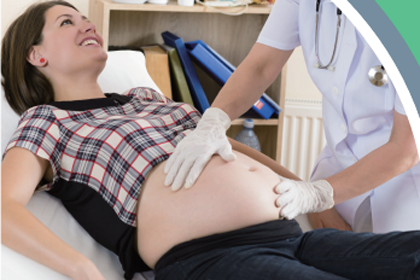Search
Related Articles

Pre and Post Surgical Abortion Education
1. What is surgical abortion?Surgical abortion (Dilation and Curetta
Instructions for Medical Abortion
Medical abortion is a non-operative approach to termination of pregn
Postoperative Instructions for Gynecologic Surg
The recommendations that follow are intended as a general guide to y
What are uterine fibroids?
Uterine fibroids are benign (not cancer) growths that develop from the muscle tissue of the uterus. They also are called leiomyomas or myomas. The size, shape, and location of fibroids can vary greatly. They may be present within the uterine cavity, within the muscular wall of the uterus, on the outer surface of the uterus, or attached to the outside of the uterus by a stem-like structure. A woman may have only one fibroid or many of varying sizes. A fibroid may remain very small for a long time and suddenly grow rapidly, or grow slowly over a number of years.
What are symptoms of fibroids?
• Changes in menstruation
○ Longer, more frequent, or heavy menstrual periods
○ Menstrual pain (cramps)
○ Vaginal bleeding at times other than menstruation
○ Anemia (from blood loss)
• Pain
○ In the abdomen or lower back (often dull, heavy and aching, but may be sharp)
○ During sex
• Pressure
○ Difficulty urinating or frequent urination
○ Constipation, rectal pain, or difficult bowel movements
○ Abdominal cramps or bloating
• Enlarged uterus and abdomen
• Miscarriages
• Infertility
• Fibroids also may cause no symptoms at all
When is treatment necessary for fibroids?
• Heavy or painful menstrual periods that cause anemia or that disrupt a woman’s normal activities
• Bleeding between periods
• Uncertainty whether the growth is a fibroid or another type of tumor, such as an ovarian tumor
• Rapid increase in growth of the fibroid
• Infertility
• Pelvic pain
Can medication be used to treat fibroids?
• Birth control pills and other types of hormonal birth control methods: These drugs often are used to control heavy bleeding and painful periods
• Gonadotropin-releasing hormone (GnRH) agonists: These drugs stop the menstrual cycle and can shrink fibroids. They sometimes are used before surgery to reduce the risk of bleeding. They can also be used to bridge a woman to menopause when fibroids will then naturally shrink. Because GnRH agonists have many side effects, they are used only for short periods (less than 6 months). After a woman stops taking a GnRH agonist, her fibroids usually return to their previous size
• Progestin-releasing intrauterine device: This option is for women with fibroids that do not distort the inside of the uterus. It reduces heavy and painful bleeding but does not treat the fibroids themselves
• Tranexamic Acid:This medication helps our blood clotting mechanism and will reduce the amount of bleeding when bleeding occurs. It does not treat the fibroids, just the bleeding caused by the fibroids
• Non-steroidal anti-inflammatory drugs (NSAIDs): NSAIDs such as ibuprofen can minimize the pain and some of the bleeding caused by fibroids
What types of surgery may be done to treat fibroids?
• Myomectomy is the surgical removal of fibroids while leaving the uterus in place. Because a woman keeps her uterus, she may still be able to have children. Fibroids do not regrow after surgery, but new fibroids may develop. If they do, more surgery may be needed
• Hysterectomy is the removal of the uterus. The ovaries may or may not be removed. Hysterectomy is done when other treatments have not worked or are not possible or the fibroids are very large. A woman is no longer able to have children after having a hysterectomy
Are there other treatments besides medication and surgery?
• Hysteroscopy
• Endometrial ablation
• Uterine artery embolization
• Magnetic resonance imaging-guided ultrasound surgery
Click the link for more information on Obstetrics & Gynecology Clinical Service








